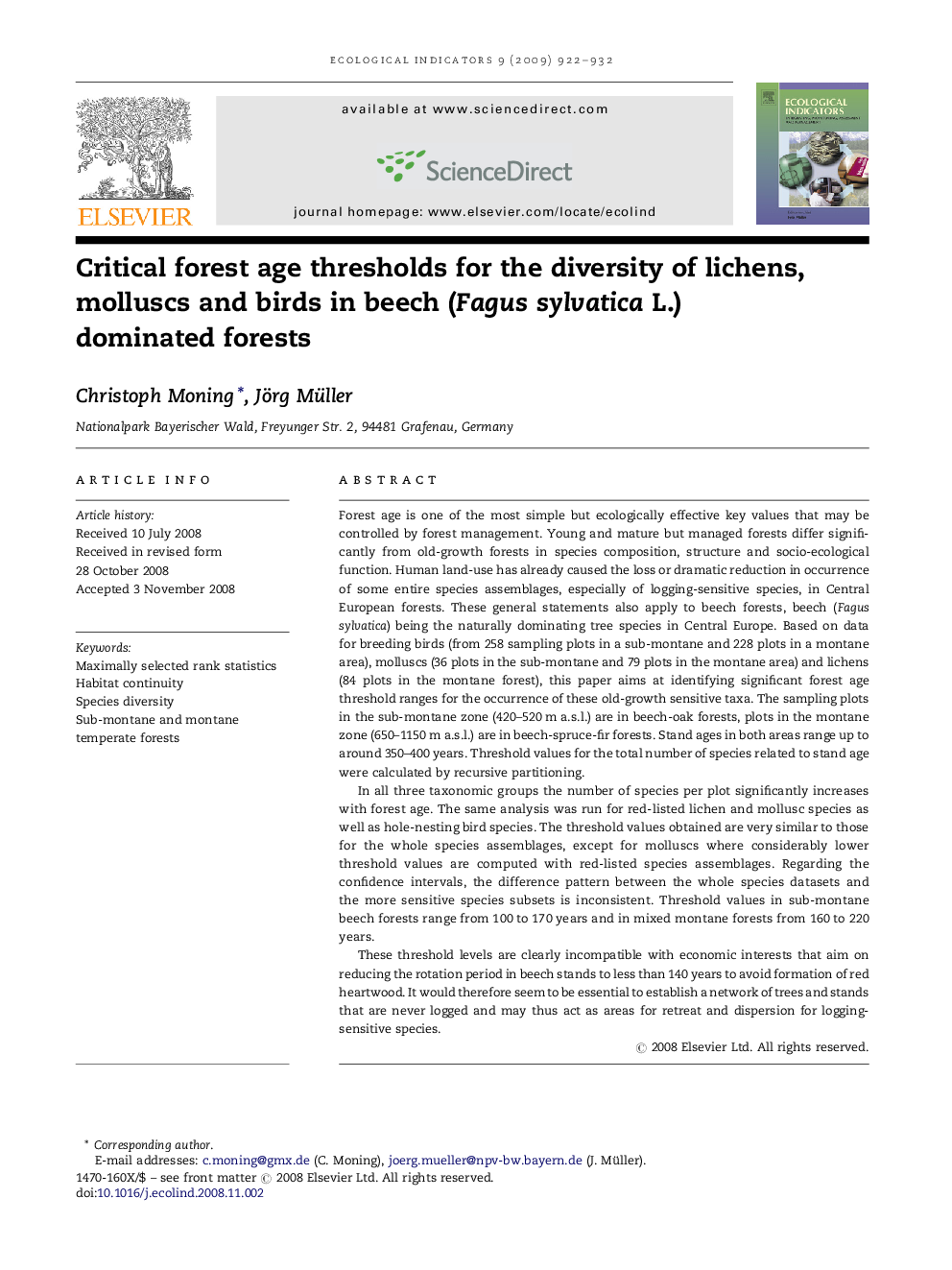| Article ID | Journal | Published Year | Pages | File Type |
|---|---|---|---|---|
| 4374517 | Ecological Indicators | 2009 | 11 Pages |
Forest age is one of the most simple but ecologically effective key values that may be controlled by forest management. Young and mature but managed forests differ significantly from old-growth forests in species composition, structure and socio-ecological function. Human land-use has already caused the loss or dramatic reduction in occurrence of some entire species assemblages, especially of logging-sensitive species, in Central European forests. These general statements also apply to beech forests, beech (Fagus sylvatica) being the naturally dominating tree species in Central Europe. Based on data for breeding birds (from 258 sampling plots in a sub-montane and 228 plots in a montane area), molluscs (36 plots in the sub-montane and 79 plots in the montane area) and lichens (84 plots in the montane forest), this paper aims at identifying significant forest age threshold ranges for the occurrence of these old-growth sensitive taxa. The sampling plots in the sub-montane zone (420–520 m a.s.l.) are in beech-oak forests, plots in the montane zone (650–1150 m a.s.l.) are in beech-spruce-fir forests. Stand ages in both areas range up to around 350–400 years. Threshold values for the total number of species related to stand age were calculated by recursive partitioning.In all three taxonomic groups the number of species per plot significantly increases with forest age. The same analysis was run for red-listed lichen and mollusc species as well as hole-nesting bird species. The threshold values obtained are very similar to those for the whole species assemblages, except for molluscs where considerably lower threshold values are computed with red-listed species assemblages. Regarding the confidence intervals, the difference pattern between the whole species datasets and the more sensitive species subsets is inconsistent. Threshold values in sub-montane beech forests range from 100 to 170 years and in mixed montane forests from 160 to 220 years.These threshold levels are clearly incompatible with economic interests that aim on reducing the rotation period in beech stands to less than 140 years to avoid formation of red heartwood. It would therefore seem to be essential to establish a network of trees and stands that are never logged and may thus act as areas for retreat and dispersion for logging-sensitive species.
